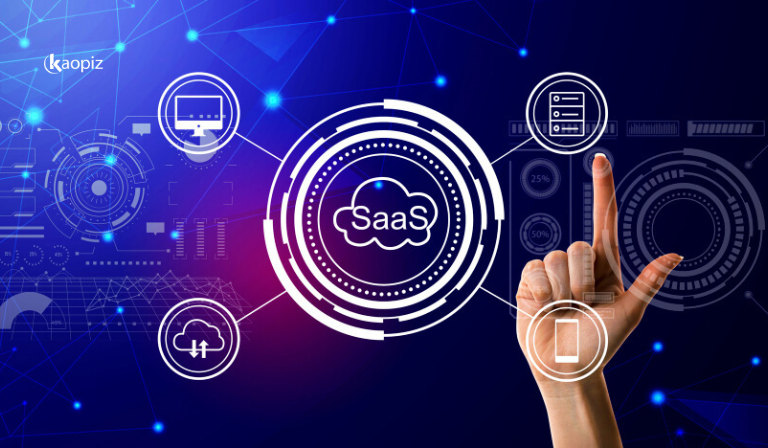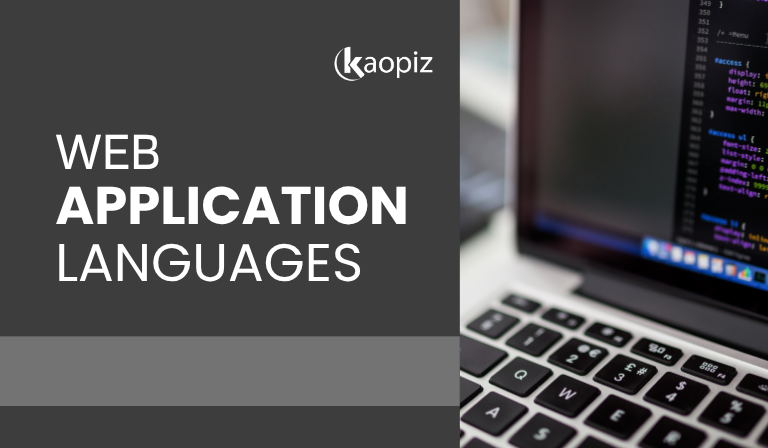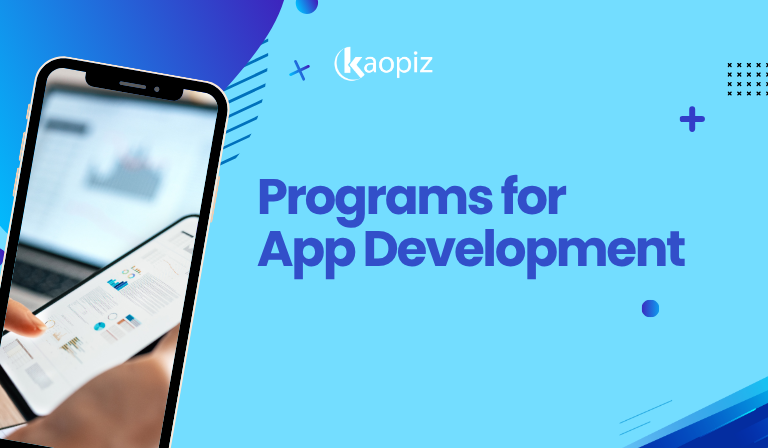IaaS vs PaaS vs SaaS – Key Differences & How to Choose?
Cloud computing has transformed the way businesses build, deploy, and manage applications. Among the most popular cloud service models are IaaS, PaaS, and SaaS. What exactly do these models offer, and which is right for your business?
In this blog, we’ll break down the key differences between IaaS, PaaS, and SaaS, explore real-world use cases, and help you determine the best cloud model for your needs. Whether you’re looking for infrastructure flexibility, development efficiency, or ready-to-use software, understanding these models is crucial for making the right choice.
Table of Contents
- What Are IaaS, PaaS, and SaaS?
- Key Differences Between IaaS, PaaS, and SaaS
- Which Cloud Model is Right for Your Business?
- How Kaopiz Supports Businesses with Cloud Services
- Conclusion
- FAQs
What Are IaaS, PaaS, and SaaS?
Cloud computing is divided into three main service models: IaaS, PaaS, and SaaS. Each, in turn, offers different levels of control, flexibility, and management, thereby allowing businesses to choose the right solution based on their needs. Let’s now explore what they are, as well as their characteristics, pros, and cons.
IaaS (Infrastructure as a Service)
IaaS is a cloud computing model that provides virtualized computing resources over the internet. Specifically, it offers businesses access to servers, storage, networking, and other infrastructure components on a pay-as-you-go basis. As a result, it eliminates the need for physical hardware management, allowing companies to scale resources efficiently and reduce operational costs.
Examples of IaaS ProvidersSome of the most popular IaaS providers include:
- Amazon Web Services (AWS) EC2
- Google Compute Engine (GCE)
- Microsoft Azure Virtual Machines
- IBM Cloud Infrastructure
Key characteristics define IaaS including:
- Cloud-based servers, storage, and networking.
- Adjust resources as needed.
- Cost-efficient, no upfront investment.
- Manage OS, applications, and configurations.
- Load balancing, backups, and recovery.
- Shared infrastructure with data isolation.
- Users handle data protection.
- Easy management via interfaces.

| Pros of IaaS | Cons of IaaS |
|---|---|
| Easily scale up or down based on demand | Require technical expertise to configure and manage virtual resources |
| Pay only for the resources used, reducing hardware costs | Users must implement their own security measures for data protection |
| Users manage operating systems, applications, and configurations | Unpredictable expenses if resource usage is not monitored properly |
| Built-in backup and recovery solutions enhance business continuity | Performance issues may arise if the network is unstable |
| Suitable for a wide range of applications, from hosting websites to big data analytics |
PaaS (Platform as a Service)
As a cloud computing model, PaaS provides a ready-to-use development environment, allowing businesses and developers to build, test, and deploy applications without managing the underlying infrastructure. It includes tools, frameworks, and middleware needed for software development, reducing the complexity of backend management.
Examples of PaaS ProvidersSome popular PaaS solutions include:
- AWS Elastic Beanstalk
- Google App Engine
- Microsoft Azure App Services
- Heroku
- Includes runtime, databases, and development tools.
- Automatically scale applications based on demand.
- The provider handles OS updates and security patches.
- Pay for resources without investing in infrastructure.
- Supports team-based development and CI/CD workflows.
- Connects easily with third-party services and databases.

| Pros of PaaS | Cons of PaaS |
|---|---|
| Focus on coding instead of infrastructure management | Less control over infrastructure compared to IaaS |
| The provider handles updates, security, and scaling | Migrating to another provider can be challenging |
| No need for dedicated IT teams to manage infrastructure | Data is stored on third-party infrastructure |
| Come with frameworks, APIs, and databases for app development |
SaaS (Software as a Service)
Another cloud computing model is SaaS. In this model, applications are delivered over the internet on a subscription basis. This means that users can access software via a web browser without needing to install or maintain it on their devices. Moreover, the service provider manages everything, including infrastructure, security, updates, and support, which helps businesses reduce IT maintenance efforts and costs.
Examples of SaaS ProvidersSome popular SaaS platforms include:
- Google Workspace
- Microsoft 365
- Salesforce
- Dropbox
- Zoom
- The provider handles hosting, security, and maintenance.
- No installation required, accessible via any internet-connected device.
- Software keeps updated every time with the latest features and security patches.
- Pay per user, per month/year, or based on usage.
- Businesses can easily add or remove users based on needs.
- Multiple users can share the same software instance while keeping their data separate.

| Pros of SaaS | Cons of SaaS |
|---|---|
| No installation or setup required | Users rely on the provider’s features and settings |
| No need for infrastructure or IT maintenance | Sensitive data is stored on third-party servers |
| Use on any device with an internet connection | Require a stable connection to function |
| Teams can work together in real-time | Switching providers can be difficult |
Key Differences Between IaaS, PaaS, and SaaS
IaaS, PaaS, and SaaS are the three main cloud computing models, each serving different needs. Specifically, IaaS provides virtualized infrastructure for full control, while PaaS, on the other hand, offers a ready platform for developers. Meanwhile, SaaS delivers fully managed software, accessible online without installation or maintenance.
Therefore, understanding the IaaS PaaS SaaS differences helps businesses choose the right solution based on their technical expertise, control needs, scalability requirements, and budget. Futhermore, the table below highlights the key distinctions between IaaS PaaS SaaS.
| Criteria | IaaS | PaaS | SaaS |
|---|---|---|---|
| Stands for | Infrastructure as a Service | Platform as a Service | Software as a Service |
| Uses | Provides virtual servers, storage, and networking for IT infrastructure | Offers a development platform with tools for building, testing, and deploying applications | Delivers fully functional software to end users over the internet |
| Technical understanding | High – Requires IT expertise to manage servers, networking, and security | Medium – Developers need knowledge of frameworks, databases, and APIs | Low – End users only need basic software knowledge |
| Level of control | Full control over infrastructure and configurations | Limited control – Users manage applications but not the underlying infrastructure | No control over infrastructure – The provider handles everything |
| Scalability | Highly scalable – Users can add/remove resources as needed | Scalable – Applications can scale based on demand, but infrastructure is managed by the provider | Limited – Users rely on the provider’s scalability options |
| Maintenance | Users manage updates, security patches, and system performance | The provider handles infrastructure maintenance, but users manage applications | The provider manages everything, including updates and security |
| Security | Users are responsible for securing data, networks, and applications | Shared responsibility – The provider secures infrastructure; users handle app security | The provider fully manages security, but data privacy depends on their policies |
| Cost structure | Pay-as-you-go pricing based on resource usage (compute, storage, bandwidth) | Subscription-based or usage-based pricing for development tools and hosting | Fixed subscription pricing (monthly/yearly) per user or feature |
| Cloud services | AWS EC2, Google Compute Engine, Microsoft Azure Virtual Machines | AWS Elastic Beanstalk, Google App Engine, Microsoft Azure App Services | Google Workspace, Microsoft 365, Salesforce, Dropbox |
Which Cloud Model is Right for Your Business?
After examining the differences between IaaS and PaaS, you might now wonder which model is suitable for your business. Ultimately, choosing the right one depends on your company’s size, technical requirements, and growth potential. Below, we will explore common scenarios where each cloud model is the best fit.
IaaS
AWS IaaS is ideal for:
- Startups and small businesses that want to avoid the cost and complexity of managing physical hardware and software.
- Larger enterprises that need full control over their applications and infrastructure while only paying for the resources they use.
- Rapidly growing companies that require flexible, scalable infrastructure to adjust hardware and software as demand increases.
PaaS
Using PaaS can be beneficial, or even necessary, in several cases:
- Collaborative software development: PaaS streamlines workflows when multiple developers are working on the same project.
- Third-party integrations: If your project involves multiple vendors, PaaS offers speed and flexibility in the development process.
- Custom application development: PaaS simplifies building, testing, and deploying applications, reducing infrastructure management.
- Cost and time efficiency: PaaS reduces the complexity of application deployment, making it a great option for businesses with tight deadlines or limited IT resources.
SaaS
SaaS is the best choice in situations where:
- Startups and small businesses need a quick e-commerce launch without worrying about server maintenance or on-premises software.
- Short-term projects require fast, cost-effective collaboration tools.
- Occasionally used applications, such as tax software, are needed without the burden of installation and updates.
- Applications requiring web and mobile access, allowing employees to work from anywhere with an internet connection.
How Kaopiz Supports Businesses with Cloud Services
At Kaopiz, we offer comprehensive cloud solutions that help businesses scale efficiently, optimize costs, and enhance security. Whether you’re migrating to the cloud, managing infrastructure, or developing systems like a cloud – based sales management system, our expertise ensures a seamless transition and long-term success. Additionally, we focus on delivering customized solutions that align with your business goals, making it easier to adapt to evolving market demands.

Our Cloud Services
From cloud migration to managed services and DevOps, we ensure seamless cloud adoption and efficiency. In particular, we offer the following services:
① Cloud Implementation- Design and develop scalable, cloud-native applications that maximize performance and flexibility.
- Utilize microservices, containerization, and serverless computing for efficient cloud-based operations.
- Migrate workloads and applications seamlessly to AWS, Azure, Google Cloud, and other platforms.
- Ensure minimal downtime, data integrity, and optimal performance during the transition.
- Continuously monitor, maintain, and optimize cloud infrastructure to ensure cost-effectiveness and reliability.
- Implement strong security protocols to protect sensitive data and prevent cyber threats.
- Automate and accelerate software development using CI/CD (Continuous Integration & Delivery) pipelines.
- Integrate AI/ML-driven solutions to build smarter, more agile, and cost-efficient IT systems.
Why Choose Kaopiz?
So, by partnering with Kaopiz, you can unlock the full potential of cloud computing and achieve seamless digital transformation.
Conclusion
Choosing between IaaS, PaaS, and SaaS depends on your business needs, technical expertise, and scalability requirements. While IaaS offers full control over infrastructure, PaaS simplifies development, and SaaS provides ready-to-use software solutions. As a result, many businesses use a combination of these models to maximize efficiency and flexibility.
If you need expert guidance on cloud migration, implementation, or management, Kaopiz is here to help. Furthermore, as an Advanced Tier AWS Partner, we provide tailored cloud solutions to help your business scale, reduce costs, and stay competitive.
Get in touch with Kaopiz today to unlock the full potential of cloud computing!
FAQs
Is Netflix a SaaS or PaaS?
Netflix is a SaaS platform, providing on-demand streaming to users. However, it uses PaaS and IaaS services like AWS to manage its infrastructure and scale efficiently.
When is PaaS a better choice than IaaS?
In general, you should prefer PaaS over IaaS in the following situations:
- Faster development: When you want to focus on coding without managing infrastructure.
- Multiple developers: If a team is working on the same project and needs easy collaboration.
- Rapid deployment: When you need to quickly build, test, and launch applications.
- Custom application development: If you need a tailored app without handling servers and configurations.
- Cost efficiency: When reducing infrastructure management costs and complexity is a priority.
Can a business use all three cloud models?
Yes, a business can use all three cloud models (IaaS, PaaS, SaaS) depending on its needs. For example:
- IaaS for infrastructure (e.g., AWS EC2 for virtual machines).
- PaaS for app development (e.g., Google App Engine for hosting applications).
- SaaS for business tools (e.g., Microsoft 365 for collaboration).
Therefore, using a combination of these models helps businesses achieve flexibility, scalability, and cost efficiency.
Trending Post




















